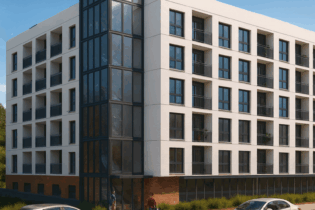Infrastructure investment
It was said that better urban planning and massive investment in infrastructure is needed to cater for the influx of people looking for job opportunities, higher salaries and urban lifestyles in Africa’s burgeoning cities. Bennet Kpentey, chief executive at Ghanaian-based Sync Consult Management Consultants, said the number of mega infrastructure projects in Africa is increasing as a result of upward mobility, high urbanisation and continued economic growth. However, he added that the continent needed to accelerate infrastructure development through innovative means such as public-private partnerships.Africa’s urbanisation on par with first world
Kpentey highlighted the rapid pace of urbanisation in Africa when he delivered the summit’s keynote address. He said that for cities in Africa which had a population size of more than one million, this number had increased from 52 million in 2011 to 65 million in 2016. “This rate of urbanisation is on par with Europe and higher than India and North America,” he said. He explained that with 40% of the population living in cities, Africa is more urbanised than India (30%) and almost at par with China (45%). “By 2030 Africa will have 760 million urban residents, increasing to 1.2 billion by 2050 according to the African Economic Outlook 2016 report,” he said.Infrastructure challenges
Kpentey noted that rapid urbanisation presented infrastructure challenges for Africa’s major cities, however he also said that this was a sign of a prospering continent. “Africa has a young population with a growing labour force and is expected to have the world’s largest working-age population of 1.1 billion by 2034,” he said. “The African Development Bank predicts that by 2060, about 1.1 billion Africans will be in the middle-class,” he added. “Most of these African’s will be residing in the continent’s cities.”Johannesburg: economic powerhouse of Africa
Jacob Mamabolo, Gauteng MEC for Infrastructure, said that as the economic powerhouse of Africa, Gauteng was attracting about 300,000 people annually from the rest of South Africa and other African countries.He said the rollout of infrastructure in the province was no easy task given that Gauteng was the most populated province which is continuing to attract more people.
He said the province was prioritising infrastructure investment, and that between 2013 and 2016, Gauteng’s infrastructure investment amounted to R30 billion. This translates into an average annual growth rate in infrastructure spending of 20.7% – the fastest growth rate for any province in the country, Mamabolo said. He also mentioned that over the next three years, a further R42 billion will be spent on infrastructure in Gauteng, while nationally almost a trillion rand will be invested in infrastructure. “The benefits of prioritising infrastructure spending cannot be underestimated,” he said.








